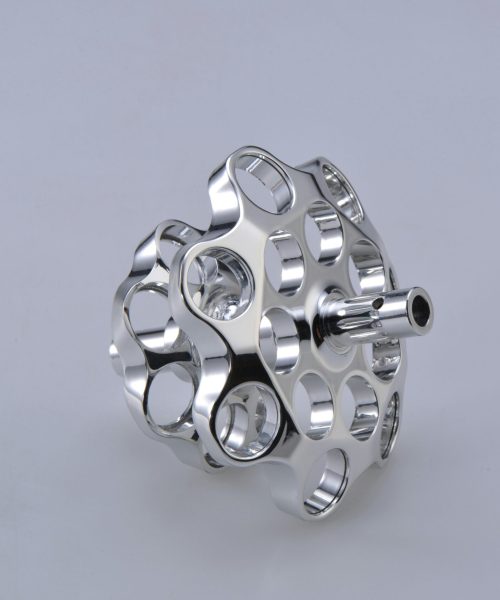Advantages and Disadvantages of CNC Machining
Choosing the appropriate manufacturing method for a new product is a crucial yet challenging process. Among the commonly used and cost-effective options, CNC machining and plastic injection molding are the most prevalent methods. Despite their cost-efficiency similarities, these two methods significantly differ in their fabrication processes. This article explores the differences between CNC process and plastic injection molding, including the materials used, achievable production volumes, and dimensional tolerances, alongside their respective advantages and disadvantages.


CNC (Computer Numerical Control) machining is a subtractive manufacturing process involving various machines such as mills, lathes, drill presses, and saws to create precise parts. The process begins with Computer-Aided Design (CAD) data, which guides the machine tool sequences and paths. Material is removed from a workpiece using cutters like end mills and drill bits, and additional machinery such as honing or grinding machines may be required to meet specific customer specifications.
The history of CNC machining dates back to manual machining in 1300 BC, but modern CNC technology emerged in the mid-1940s. The integration of CAD and Computer-Aided Manufacturing (CAM) software in the 1970s revolutionized the process. Today, CNC machining is a preferred method across various industries due to its ability to accommodate design changes, produce tight tolerance parts, and work with multiple materials.


Advantages and Disadvantages of CNC Machining
Avantajlar:
- Achieves beautiful surface finishes and tight tolerances.
- Supports a wide range of materials, including metals and plastics.
- Facilitates easy modification of part designs.
- Faster tooling lead times compared to injection molding.
Dezavantajlar:
- Higher costs for large production volumes and price-per-part.
- Labor-intensive due to the need for manual setup and removal of workpieces and tools.


Exploring Plastic Injection Molding
Plastic injection molding involves an injection molding machine (IMM) that uses components like injection screws, barrels, and molds to shape parts. Plastic pellets are melted and injected into molds, where they cool and solidify into the final product. Developed by Isaiah and John Hyatt in 1872, injection molding has grown into a multi-billion dollar industry known for its cost-effectiveness in producing plastic parts.


Advantages and Disadvantages of Plastic Injection Molding
Avantajlar:
- Capable of producing large volumes of parts rapidly and repeatedly.
- Lowest price per part among manufacturing processes due to the longevity of molds.
- Minimal post-processing required for parts.
Dezavantajlar:
- Challenging to accommodate design changes due to complex mold structures.
- Surface flaws may result from imperfections in the mold.
- High upfront investment needed for mold fabrication.、
Comparative Analysis of CNC Machining and Injection Molding
Materials: CNC machining supports a broader range of materials, including metals, whereas injection molding is limited to specific plastics.
Production Volume: Injection molding excels in high-volume production, while CNC machining is better suited for small to medium runs.
Precision: CNC machining offers tighter tolerances and superior surface finishes.
Cost: CNC machining involves lower upfront costs, whereas injection molding requires significant investment but benefits from economies of scale in large production runs.
Speed: Injection molding can produce parts faster once the mold is ready, but CNC has shorter lead times for initial production.


Alternatives to CNC Machining and Injection Molding
3D Printing: Suitable for complex geometries and versatile in material usage, though not always practical for large-scale production.
Casting: A simpler process for producing parts, albeit with lower precision and longer production times.
Summary
Choosing between CNC and plastic injection molding depends on your production needs, material requirements, and budget constraints. CNC offers flexibility and precision for smaller runs, while injection molding provides cost-efficiency for large-scale production. By understanding these methods’ strengths and limitations, you can make an informed decision that best suits your manufacturing goals.
Reference from:xometry
For more detailed information on CNC machining and plastic injection molding, or to request a quote, please visit our website or contact a GCH Process representative.








